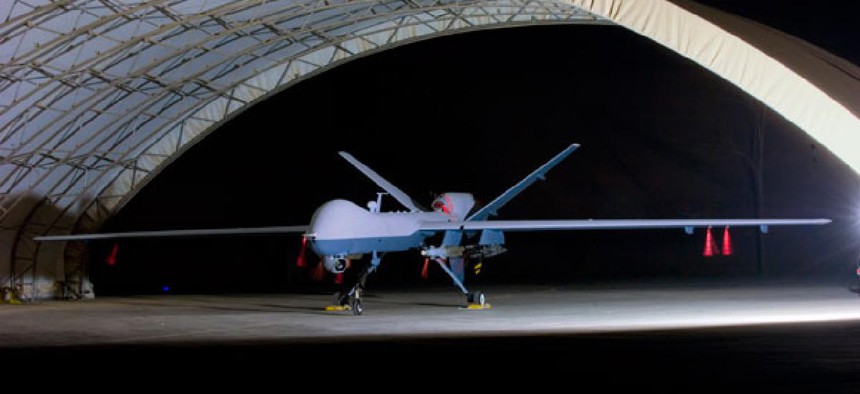Commentary: When the Whole World Has Drones

United States Air Force
U.S. robotic warfare precedent could be fearsome on a global scale.
A slim aircraft glided through Israeli airspace, maintaining low altitude and taking a winding path to avoid detection. It flew over sensitive military installations and was beginning its approach to the Dimona nuclear reactor when it was blown from the sky by the Israel Defense Forces. The plane was pilotless, directed by agents elsewhere, and had been attempting to relay images back home. Whether they were successfully transmitted, Israelis won’t say, perhaps because they don’t know. But here’s what’s certain: It wasn’t American. It wasn’t Russian or Chinese. It was an Iranian drone, assembled in Lebanon and flown by Hezbollah.
The proliferation of drone technology has moved well beyond the control of the United States government and its closest allies. The aircraft are too easy to obtain, with barriers to entry on the production side crumbling too quickly to place limits on the spread of a technology that promises to transform warfare on a global scale. Already, more than 75 countries have remote piloted aircraft. More than 50 nations are building a total of nearly a thousand types. At its last display at a trade show in Beijing, China showed off 25 different unmanned aerial vehicles. Not toys or models, but real flying machines.
It’s a classic and common phase in the life cycle of a military innovation: An advanced country and its weapons developers create a tool, and then others learn how to make their own. But what makes this case rare, and dangerous, is the powerful combination of efficiency and lethality spreading in an environment lacking internationally accepted guidelines on legitimate use. This technology is snowballing through a global arena where the main precedent for its application is the one set by the United States; it’s a precedent Washington does not want anyone following.
America, the world’s leading democracy and a country built on a legal and moral framework unlike any other, has adopted a war-making process that too often bypasses its traditional, regimented, and rigorously overseen military in favor of a secret program never publicly discussed, based on legal advice never properly vetted. The Obama administration has used its executive power to refuse or outright ignore requests by congressional overseers, and it has resisted monitoring by federal courts.
To implement this covert program, the administration has adopted a tool that lowers the threshold for lethal force by reducing the cost and risk of combat. This still-expanding counterterrorism use of drones to kill people, including its own citizens, outside of traditionally defined battlefields and established protocols for warfare, has given friends and foes a green light to employ these aircraft in extraterritorial operations that could not only affect relations between the nation-states involved but also destabilize entire regions and potentially upset geopolitical order.


